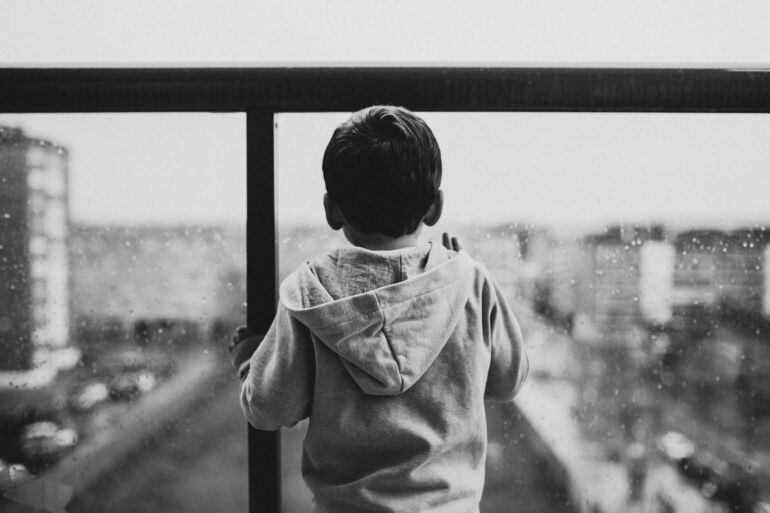There has been a significant increase in orphanhood in the last two decades in the U.S., according to a new study. The research, published in Nature Medicine, estimates that in 2021, 2.9 million children in the United States, or 4.2% of all U.S. children, had experienced the death of at least one parent or a grandparent caregiver responsible for most of the basic needs of the child.
Orphanhood is defined by the United Nations Children’s Fund as the death of one or both parents. The study estimates that there was a 56% increase in the number of children affected by orphanhood and caregiver death in the U.S. between 2000 and 2021.
The research was led jointly by a team at Imperial College London in collaboration with the U.S. Centers for Disease Control and Prevention.
It also found that the five states with the highest orphanhood burden were West Virginia, New Mexico, Mississippi, Louisiana, and Kentucky—with an estimated 1 in 25 children affected by orphanhood. These same five states also had the highest poverty ranking (U.S. Census, 2023), suggesting links between poverty and premature deaths of parents, which in turn is spawning a hidden generation of orphanhood among their bereaved children.
Since 2020, drug overdose has been the leading cause of orphanhood incidence and prevalence, surpassing COVID-19. Orphanhood rates particularly escalated from 2020 to 2021, with the intersecting crises of the opioid epidemic and COVID-19 pandemic.
It is noteworthy that for 48 states, fatal injuries—including drug overdose, suicide, homicide, and unintentional injuries—were among the top two causes of orphanhood in 2021. Orphanhood due to fatal injuries was higher than orphanhood due to leading chronic diseases (such as heart disease and cancers).
Groups of children disproportionately affected by orphanhood included an estimated 1.7 million adolescents aged 10–17 years, which means 1 of every 20 adolescents in the U.S. has lost either a mother, father, or both parents to premature death.
Increased orphanhood rates were also observed among non-Hispanic American Indian or Alaska Native and non-Hispanic Black race & ethnicities, where approximately 1 of 15 and 1 of 20 children, respectively, were bereft of parents. The highest orphanhood burden occurred among non-Hispanic American Indian or Alaska Native adolescents—approximately 1 of 10 children, which is comparable to orphanhood rates observed in sub-Saharan Africa early in the HIV pandemic.
Previous research indicates that children who experience the loss of a caregiver have an increased risk of poverty, exploitation and sexual violence or abuse, HIV infection, mental health challenges, and severe distress, and in some contexts, increased vulnerability to gang involvement and violent extremism.
Given the scale of caregiver death, the researchers call for comprehensive, evidence-based programs for children experiencing orphanhood as a moral and public health imperative. The findings from this study can inform state-specific responses tailored to leading causes of parental death, and to age and circumstances of affected children.
The researchers conclude that policies and programs that provide healing and support for 3 million children in the U.S. who have experienced orphanhood and caregiver death may help reduce acute and long-term negative effects of this adverse childhood experience.
Evidence highlights three essential components of orphanhood prevention and response that effectively promote their recovery and resilience and can guide policy investments for both all-cause and cause-specific orphanhood and caregivers: (1) prevent death of parents/caregivers through timely prevention and treatment of leading causes of death and ensured access to health and mental health care for all; (2) prepare families to provide safe and nurturing alternative care; and (3) protect children affected by orphanhood and vulnerabilities, through grief and mental health counseling, and parenting, economic, and educational support.
Given the scope of orphanhood/caregiver loss and associated threats to the mental and physical health, and lifelong well-being of children, these strategies can be contextualized and prioritized.
Dr. Susan Hillis, study author from Imperial College London and Co-Chair of the Global Reference Group on Children Affected by Crisis at University of Oxford, said, “We estimate that on average, one child in every classroom across America has experienced the death of a parent or caregiver. These children face a heightened risk of lifelong adversity, unless they are able to get appropriate support in time.
“Our findings show the urgency to invest in response plans focused on children at greatest risk and in the locations most affected. Effective policies can build on two decades of experience supporting vulnerable children through the HIV/AIDS epidemic, to offer needed support for children experiencing loss from any cause, in the U.S.
“We have seen that timely, responsive, and supportive intervention transforms acute and lasting threats into lifelong dividends. The right help provided over the appropriate time period can transform trajectories of despair into trajectories of hope.”
The authors note some limitations. Their estimates are generated by mathematical modeling and do not count actual numbers of children affected by parent or caregiver death. Most notably, the estimated number of children per death in caregiver ages is estimated by population-level fertility rates, and may over- or undercount the actual number of children affected, and hence caregiver death incidence and prevalence. Additionally, limited information on the roles of co-residing grandparents supporting children may underestimate their contributions to caregiving.
Dr. Oliver Ratmann, senior study author from Imperial College London, adds, “Unfortunately, public health data and models cannot actually identify children experiencing orphanhood. But by including on death certificates if any children are left behind, we could unlock immediate and comprehensive support at a critical time, and put to an end the largest of all challenges: finding all the children that collectively make up this public health crisis.”
Writing in a linked Comment, Dr. Rachel of Kidman, Stony Brook University, (who was not involved in the study), says, “This is a strong study that presents important, detailed information that could allow government to push for and target additional services. I think the work will generate a lot of vital attention, particularly as the study found that drug overdoses exceed COVID-19 as a cause of orphanhood in 2020–21. This is a public health challenge that requires far more prevention and mitigation services.”
According to the Editorial Team at Nature Medicine, “Orphanhood is a significant yet overlooked public health crisis that endangers children’s health, well-being, and social and financial security. This study highlights the prevalence and causes of orphanhood and caregiver loss in the United States, revealing the burden created by multiple crises from the opioid epidemic, gun violence, institutional racism, and economic instability. These factors have lasting effects across generations that also intensify social disparities.”
More information:
Nature Medicine (2025). www.nature.com/articles/s41591-024-03343-6
Provided by
Imperial College London
Citation:
United States sees significant increase in orphanhood (2025, January 10)



